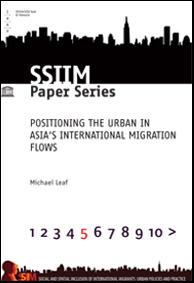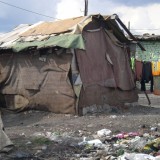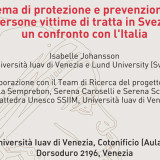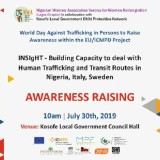SSIIM Paper Series Vol. 5
Positioning the Urban in Asia’s International Migration Flows
by Michael Leaf
Although not without historic precedent, the system of population movements linking the countries of East and Southeast Asia is seen as remarkable for both its newness and for the speed at which it has grown relative to the other major migration systems in the world today. This paper briefly reviews international population movements within this region and discusses current factors and conditions that shape policies toward international migrants. Overall, it is found that in official policy terms international migrants are almost exclusively understood to be temporary labour migrants despite their recognized structural importance within the economies of both sending and receiving countries. The main emphasis of the paper, however, is on the roles and functions of the region’s urbanization in shaping flows and patterns of migration. A major section of the paper thus focuses on the situation of Indonesian migrants in Malaysia as a means for providing a finer grained analysis of these issues. In its conclusion, the paper lays out a basic framework for a research and advocacy agenda in support of the inclusion of international migrants in Asian cities and argues for the value of developing comparative studies of immigration and migrant inclusion in the cities of the region.






